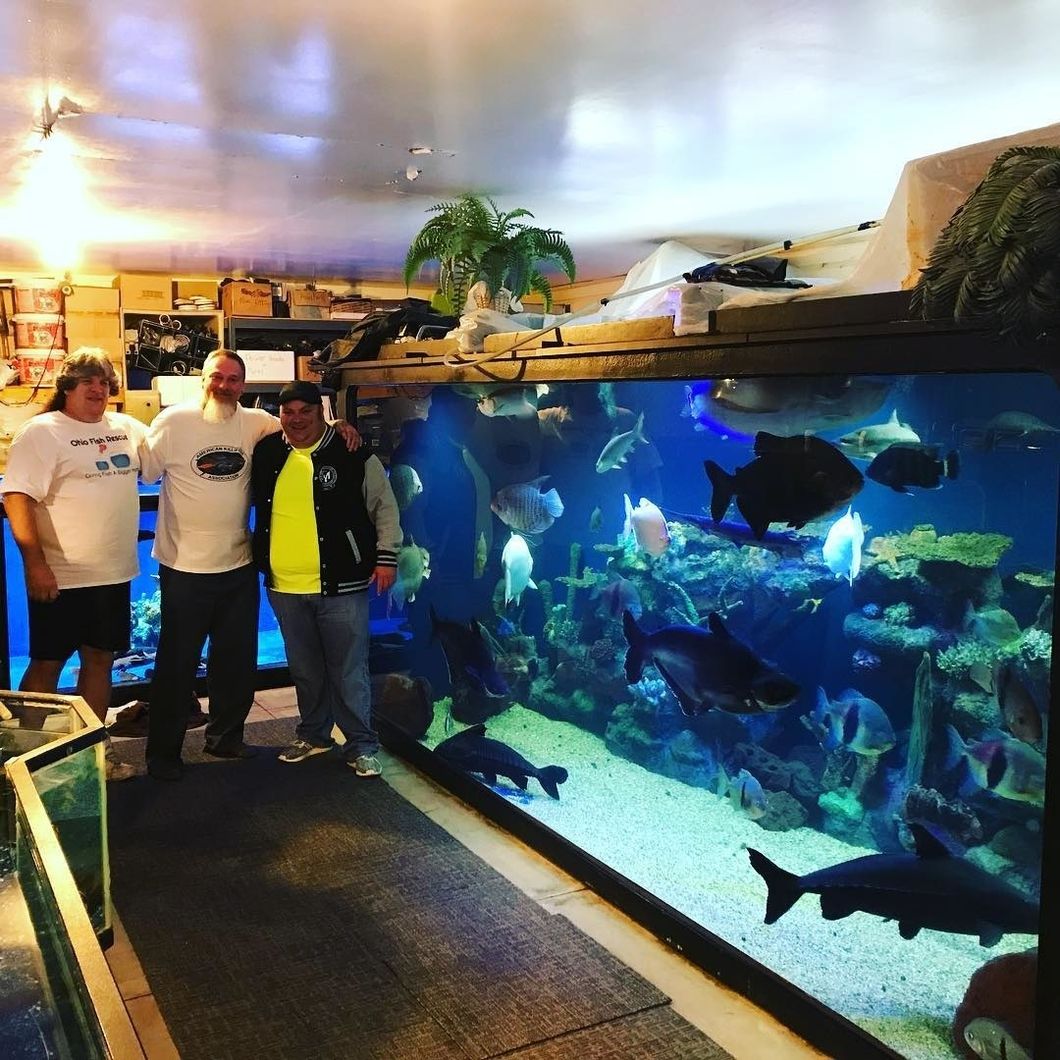Imagine a room filled with tanks, each over 1,000 gallons. Imagine that each of these tanks is filled with freshwater monster-sized fish: knife fish, Redtail catfish, pacu, iridescent sharks, giant gouramis, freshwater stingrays, etc.
Now imagine that this room is inside someone's house and that these fish were almost sentenced to die. These fish came from pet stores that sold them at a small size of three to four inches. The people who adopted them either didn't know how big they would become or simply planned on keeping them for a little while before finding them a new home. That is the mission of the Ohio Fish Rescue: to give fish that have outgrown their original tanks a bigger home.
The Ohio Fish Rescue is a non-profit organization founded by two guys, Big Rich and Josh. The room they use to house all the tanks and fish is part of Big Rich's house. The tanks mostly come from auctions and pet stores that have shut down, which lowered the cost of start-up and expansion. Tank sizes range from 50 gallons to 4,400 gallons. Their filtration system is custom built with an 800-gallon sump that has nine large filter socks, a settling chamber and two DIY biological filtration compartments made from plastic trash cans. All the tanks are bare bottom with tiles to make maintenance easier.
Since the filter system connects most of the tanks together, quarantining new arrivals is essential to protect the health of all the fish in their system. All new arrivals are quarantined in a 450-gallon tank for multiple weeks to ensure that they are active and healthy. To transport fish from original owners to their fish room, they use large plastic tote bins and a 1000-gallon tube loaded on to a trailer. They take in fish throughout the state of Ohio and sometimes surrounding states. If the fish is a "family pet," they keep it so that their original owners can come back and see them. If the fish doesn't have a name, they will try to find someone, with a large enough tank, to give it away to.
While what the Ohio Fish Rescue is doing is great, it is not a viable long-term solution for dealing with the growing number of large exotic fish and other creatures that are in the pet trade. When a pet fish grows too large for a home aquarium, it is either given away, killed or released into the wild. With larger species such as Pacu, Arowana, and Redtail catfish, it's usually pretty difficult for them to find a new home if they have exceeded 14 inches.
Besides the fact that it is illegal to release fish and other pets back into the wild, these animals also shouldn't be released because they can become invasive species if the can survive and breed. Invasive species disrupt local ecosystems by competing with native species for food and cause billions of dollars in damage to waterways and businesses that rely on healthy ecosystems. Koi, goldfish, lionfish, pythons, and crocodiles are good examples of pets that have become invasive species in the United States.
Before people buy a pet, you should thoroughly research the conditions, diet and maximum size of the animal that you are planning to keep. For those who don't want a long-term commitment, then they should either adopt a pet that they can easily find a new home for or select a pet that naturally has a shorter lifespan. In the case of fish, bettas, guppies, dwarf gouramis, rasboras platies, mollies, tetras, and killifish are good choices for easy to care for, small fish that have relatively short lifespans.
Pet stores should stop selling fish that grow over 14 inches and other large creatures (or at least custom order them) since they grow too large for most homeowners keep. At PetSmart, for example, still sells large specifies of plecos, knife fish, pacu and koi, which can grow to be two feet or longer. Some people think that if their pet grows too large, they can take it to a public aquarium or zoo, but the zoos and public aquariums usually don't take them. Public aquariums and zoos often have strict quarantine requirements so they can only take animals from specific breeders and other zoos. Exhibits are often stocked to capacity when they open so there is generally little room for more animals.
Last but not least, please donate to the Ohio Fish-Rescue, via Go Fund Me, so that they can continue to rescue these magnificent giant fish and give them a proper home.
DISCLAIMER: I was not sponsored in any way by Ohio Fish Rescue to write this article, this content is all my own opinion and facts I gathered from various videos and websites relating to the Ohio fish rescue.





 Lumiere figure at the Disney Store at the Ala Moana Shoppi… | Flickr
Lumiere figure at the Disney Store at the Ala Moana Shoppi… | Flickr








 StableDiffusion
StableDiffusion StableDiffusion
StableDiffusion 10. Extra BlanketsJuwenin Home 100% Cotton Knitted Throw Blanket
10. Extra BlanketsJuwenin Home 100% Cotton Knitted Throw Blanket StableDiffusion
StableDiffusion StableDiffusion
StableDiffusion File:Kishlaru familie.jpg - Wikimedia Commons
File:Kishlaru familie.jpg - Wikimedia Commons Photo by Hanna Balan on Unsplash
Photo by Hanna Balan on Unsplash StableDiffusion
StableDiffusion black blue and yellow round illustrationPhoto by
black blue and yellow round illustrationPhoto by 





 woman holding glass jar
Photo by
woman holding glass jar
Photo by 




